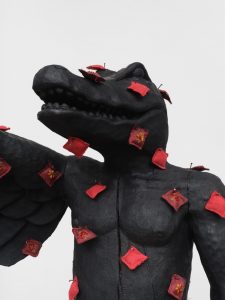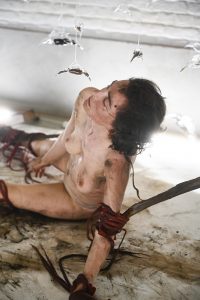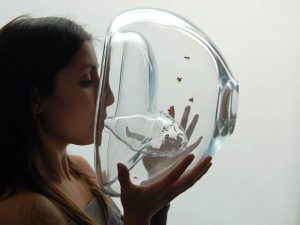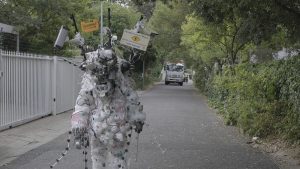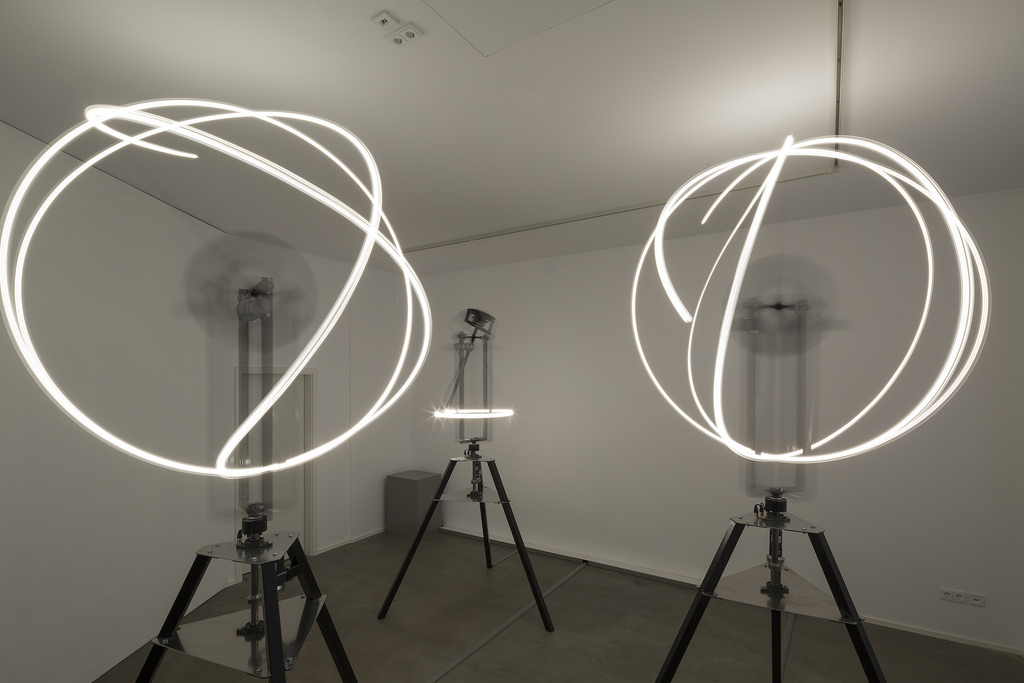
Joris Strijbos, Axon, 2016. Photo by Bresadola+Freese/drama-berlin.de for NOME Gallery
Joris Strijbos‘s kinetic light sculptures are elegant, ingenious and almost minimalist. Under the deceivingly simple appearance of the works, lay systems that delve into the laws of cybernetics, play with the architecture of the space, mimic biological systems and surprise their creator with their intrinsic unpredictability.
The artist is currently showing two of his latest works in a solo show at the NOME gallery in Berlin. The first of them, Homeostase, is made of group of luminous elements that communicate with each other and devise a generative choreography based on principles found in cellular automaton and swarm intelligence. The second installation, called Axon, consists of a trio of rotating arms that explore the idea of machine synesthesia and generate their own audiovisual composition.
The two installations are composed of a series of identical elements, connected in a network and exchanging information between one another through electric signals. The collective behavior of the actuators and sensors create unpredictable patterns, as though a system of living organisms with their own variable program. A moving scene emerges, where the borders between a ‘natural’ order of things and the mechanical constructions of humans are tested.
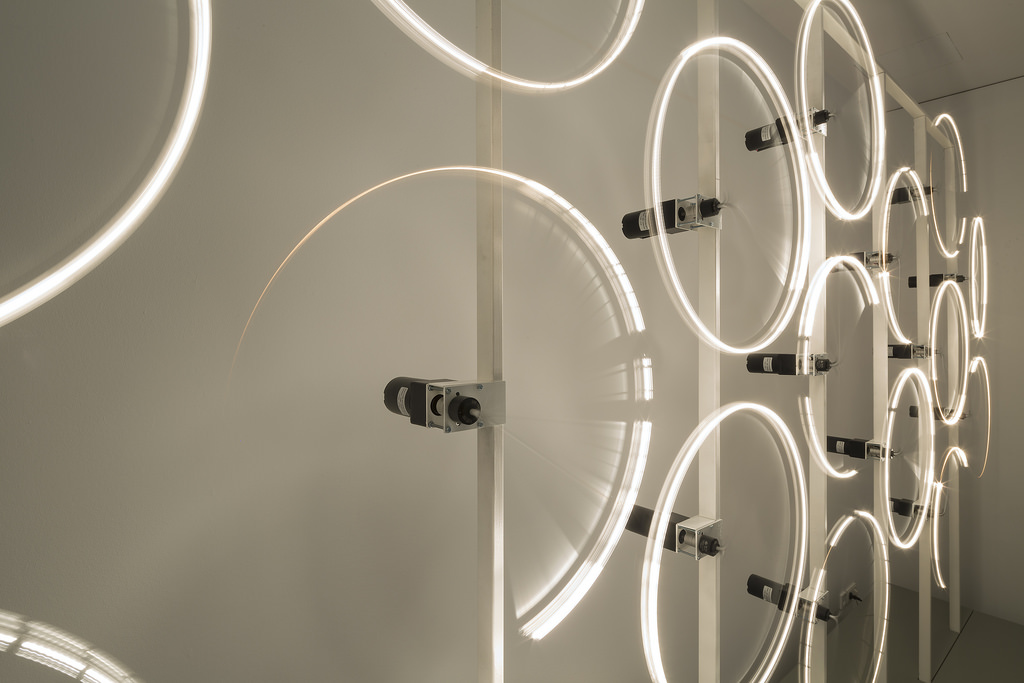
Joris Strijbos, Homeostase, 2016. Photo by Bresadola+Freese/drama-berlin.de for NOME Gallery
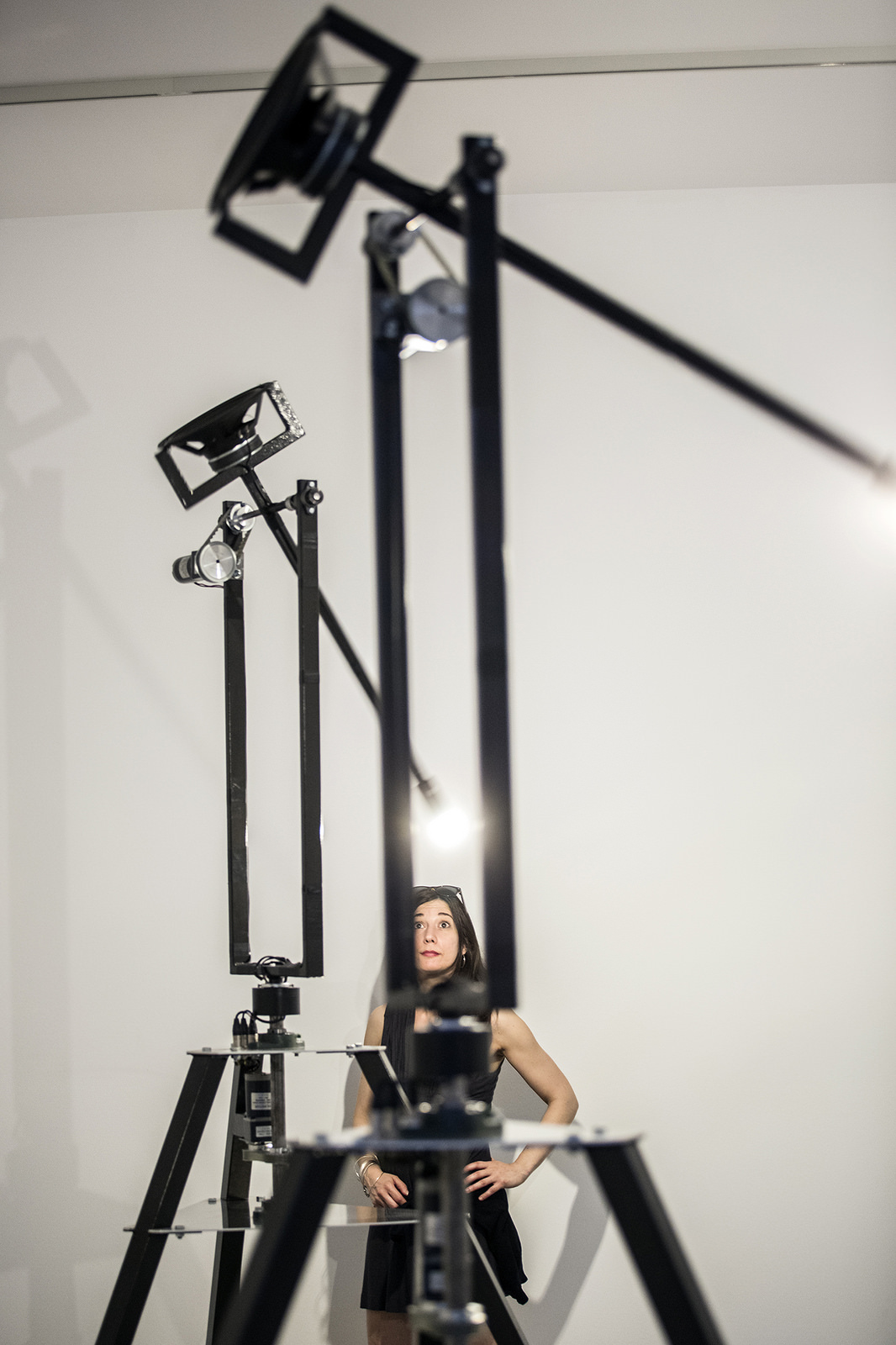
Opening | Oscillations by Joris Strijbos. Photo by Bresadola+Freese/drama-berlin.de for NOME Gallery
Strijbos is part of Macular collective, a group of artists interested in art, science, technology, and perception (do have a look at their website when you have a moment, there’s tons of talent in there) and is also an 2015 alumnus of SHAPE, a platform for innovative music and audiovisual art from Europe. I caught up with the artist right before its solo show opened in Berlin:
Hi Joris! Some of your work is inspired by early cybernetics. Why do you think it is important and relevant today to pay closer attention to early cybernetics? What can the cybernetics approach teach us about machines, living systems, intelligence, etc?
For me early cybernetics is mostly an inspiration. I like the idea that complexity can emerge from simple rule-sets and feedback loops. The fluctuating outcome of these kind of systems make me think of social interaction processes within groups of living organisms.
The works you are showing at NOME start from a set of parameters that you established and then they take a life of their own. Has this element of unpredictability ever surprised you? Do the installations sometimes behave in ways you wouldn’t have expected for example?
They definitely behave in ways that I could not have predicted, especially in the beginning of programming the installations. I start with some very simple feedback loops and see what kind of behaviour the installation performs. From there on the programming becomes more of an interaction between me and the machine. I try to provoke a certain interesting and emergent behaviour in which there is a balance between unpredictable complexity and the opportunity for the spectator to “read” the rules of the system.
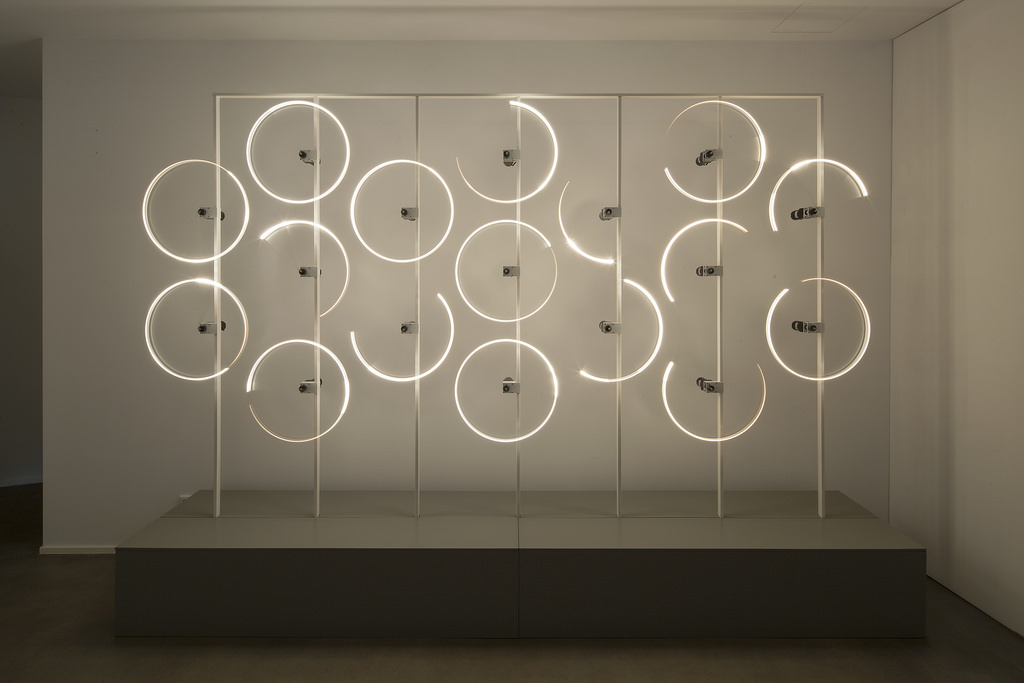
Joris Strijbos, Homeostase, 2016. Photo by Bresadola+Freese/drama-berlin.de for NOME Gallery
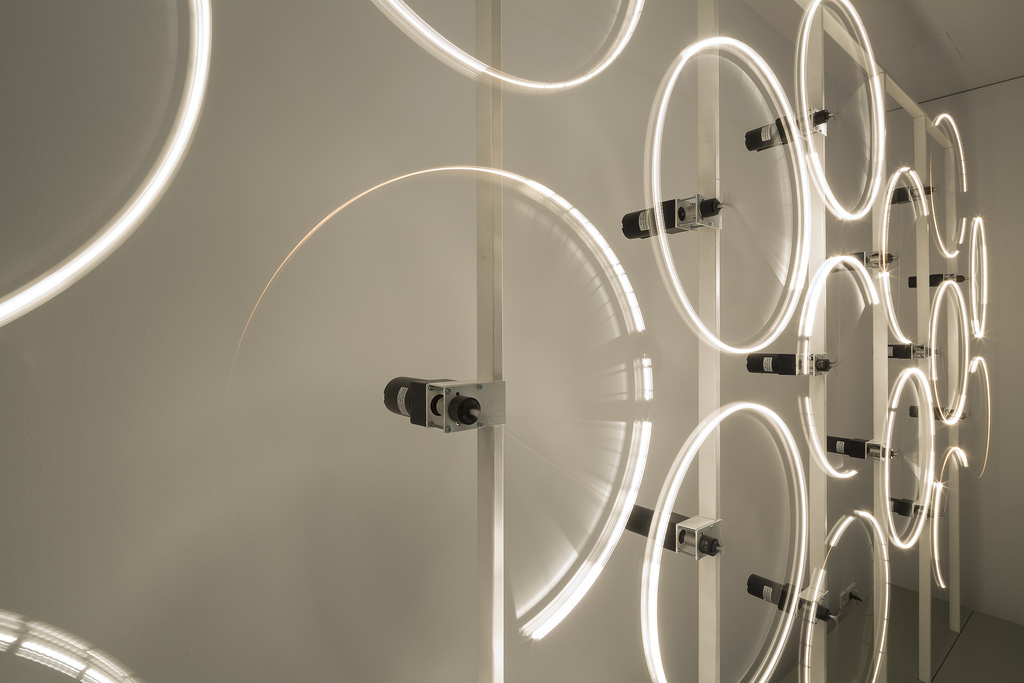
Joris Strijbos, Homeostase, 2016. Photo by Bresadola+Freese/drama-berlin.de for NOME Gallery
Do you think that it is important for the visitors of the exhibition to understand the functioning of the works in order to enjoy them?
I don’t think it is necessary to have a deeper understanding of the background of these works. They are primarily build as multi sensorial installations that can be experienced in it’s abstract form. They are kinetic light works that perform a choreography which can be seen as some sort of visual music. This can be experienced without knowledge of the idea to work with artificial living systems. What I like is that by observing the works someone can detect the rules behind the actions that take place in the installation.
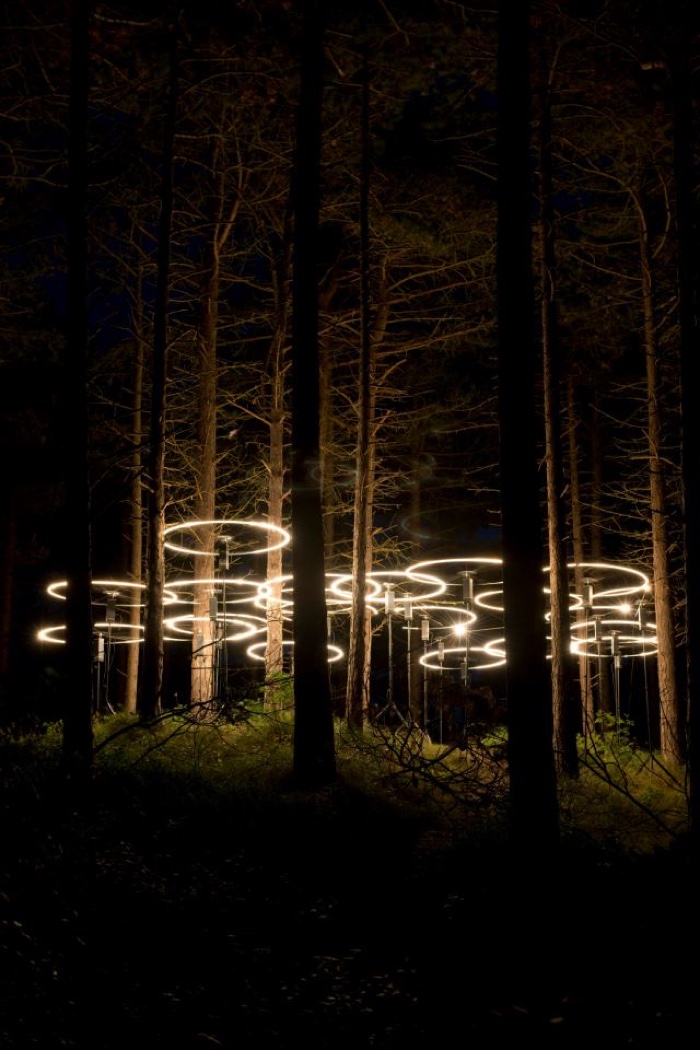
Joris Strijbos, Homeostase
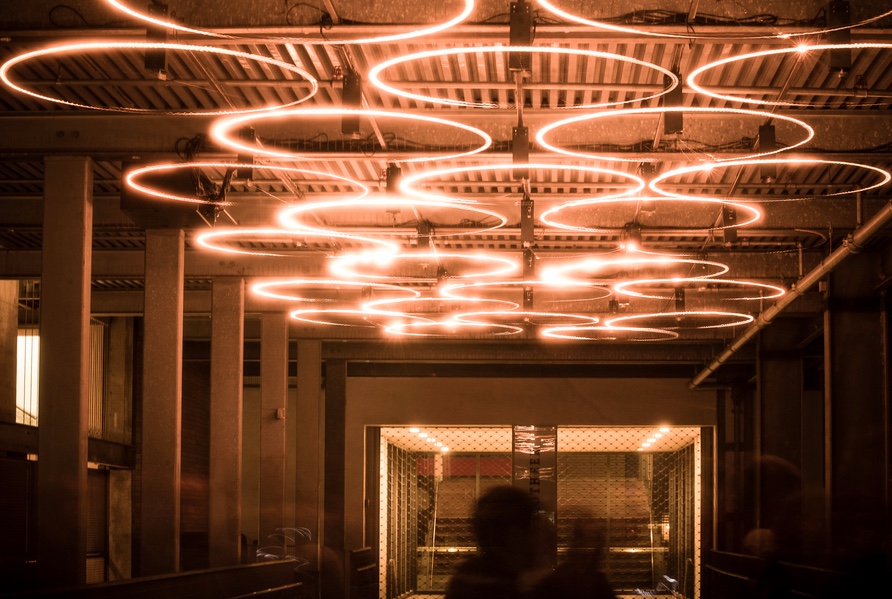
Joris Strijbos, Homeostase
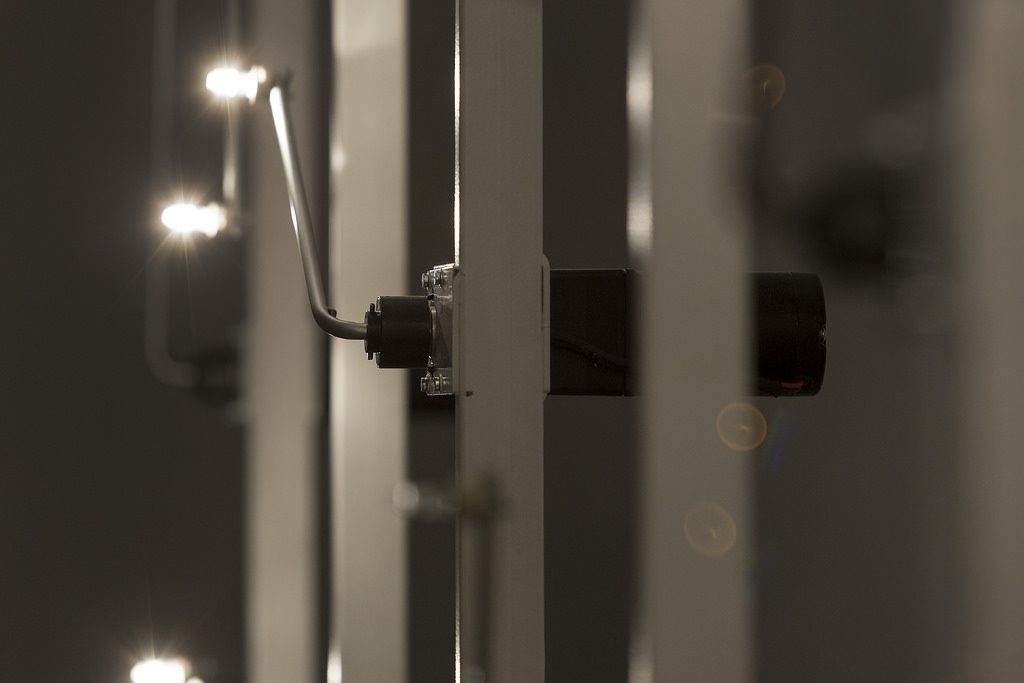
Joris Strijbos, Homeostase, 2016. Photo by Bresadola+Freese/drama-berlin.de for NOME Gallery
I was looking at the spectacular images of Hemeostase on your website and it seems that each time you exhibited the work, it inhabited the space very differently. How are you planning to install Homeostase at NOME? How will it adapt to the gallery?
Indeed the work was first realised as a modular system that could adapt to every space. It was mainly installed as a horizontal field, either above or in front of the viewer. For NOME I made a new version of the work that gives the spectator more of a topview. The units are placed in a vertical grid which gives a good view of the interactions between the different rotating arms in the system.
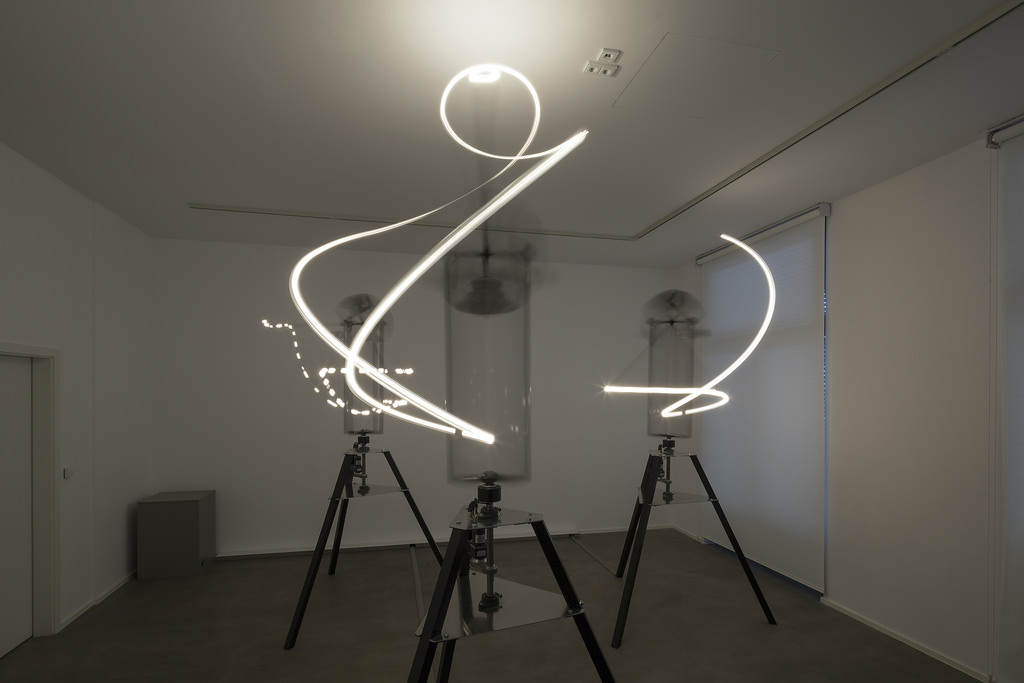
Joris Strijbos, Axon, 2016. Photo by Bresadola+Freese/drama-berlin.de for NOME Gallery
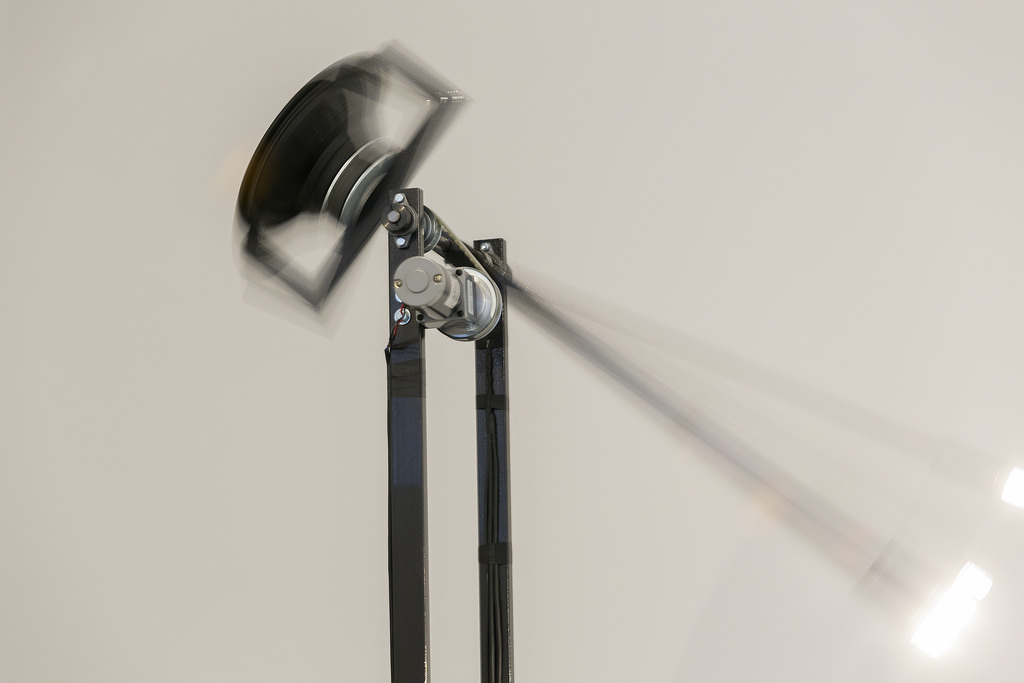
Joris Strijbos, Axon, 2016. Photo by Bresadola+Freese/drama-berlin.de for NOME Gallery
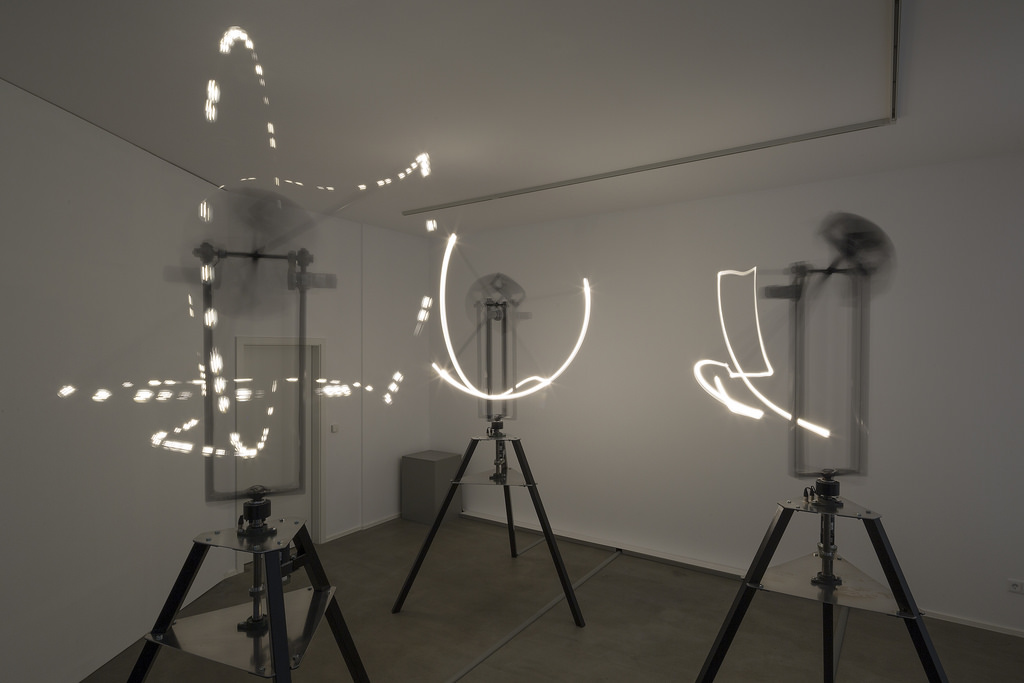
Joris Strijbos, Axon, 2016. Photo by Bresadola+Freese/drama-berlin.de for NOME Gallery
Axon seems to be a new work. Could you take a moment to tell us how it works and what you wanted to achieve/show with it?
Axon came forth out of the idea of machine synaestetics. I was reading in John Johnston‘s book, The Allure of Machinic Life where he writes about new forms of nascent life that emerge trough technical interactions within human-constructed environments. At the same time I was doing some research on neural networks and synesthesia. This made me think of how synesthesia could work inside a machine. And so the base for the work comes from the idea to cross sensors and actuators in a robotic community. Technically the work consists of three identical rotating arms, which have a speaker, a sensor and a light attached to it. In the work motion, sound and light are connected in a very direct way and form components for a generative audiovisual composition.
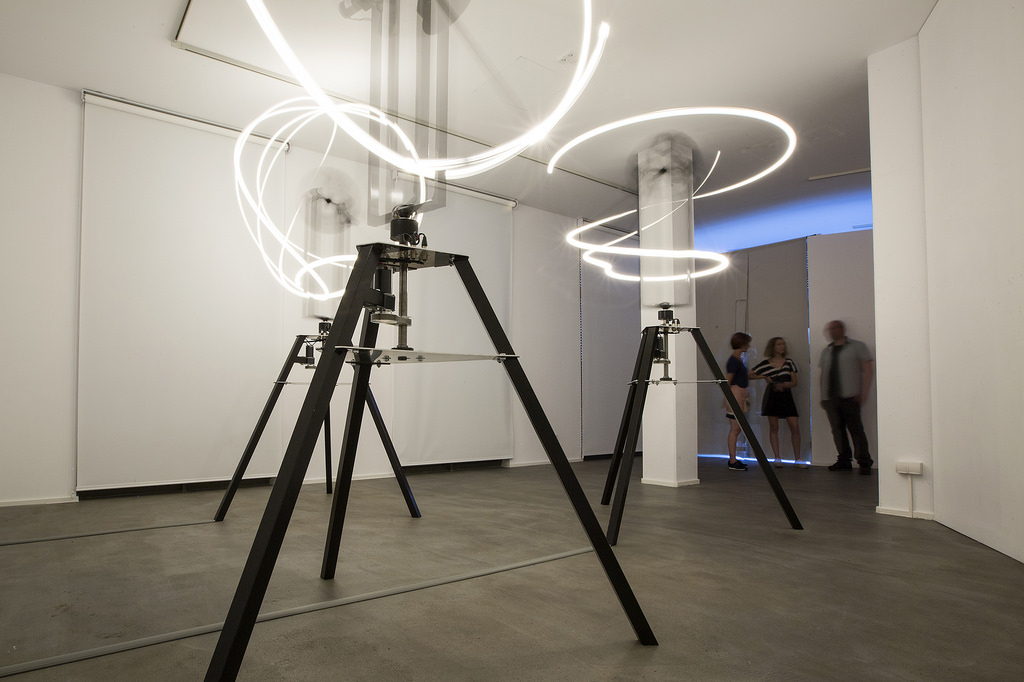
Opening | Oscillations by Joris Strijbos. Photo by Bresadola+Freese/drama-berlin.de for NOME Gallery
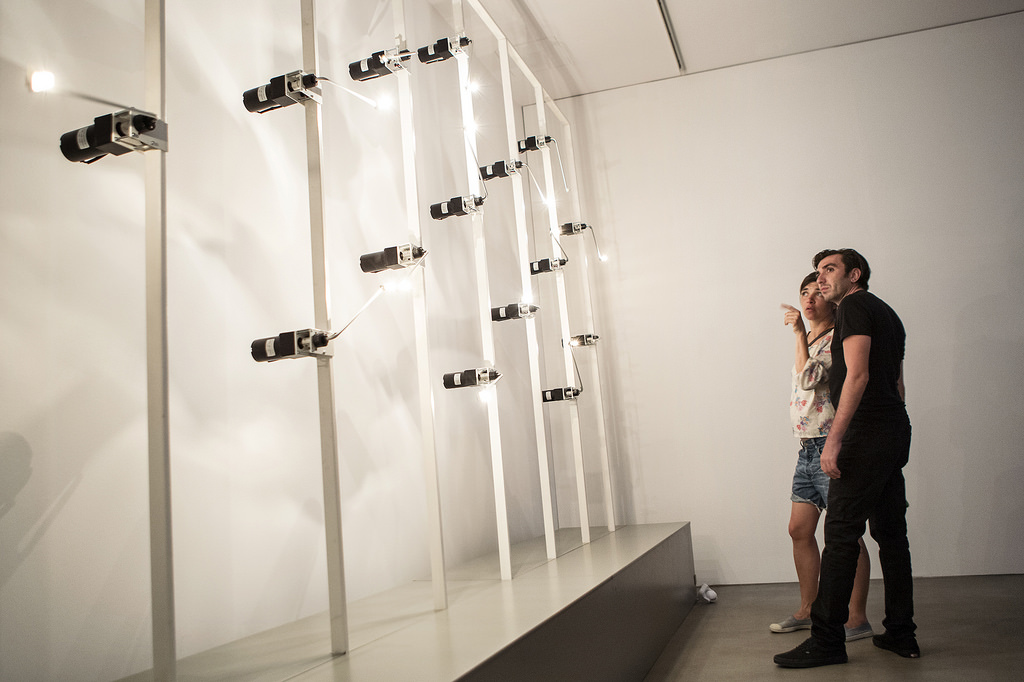
Opening | Oscillations by Joris Strijbos. Photo by Bresadola+Freese/drama-berlin.de for NOME Gallery
Both Axon and Homeostase “comprise a robotic community of identical elements, connected in a network and exchanging information between one another through electric signals.” Does the presence of visitor influence in anyway the installations? Or is it some kind of an internal dialogue between the elements?
In both the works there is communication trough light. This means that the units in the works can detect the amount of lumen around them. In theory a visitor could influence the system, but my aim is more on an interaction between the different units in the system instead of one with the audience.
Any upcoming projects, exhibition or research you could share with us?
At the moment I am busy with the Macular collective to set up a lab concentrating on a combination of land art and new media art. It is mainly focused on using green energy sources for kinetic light and sound installations. Furthermore I am working with artist Nicky Assmann on a project focusing on the moiré effect. We are making kinetic sculptures that play with the visual perception of complex grids. There are some exhibitions planned with new works from the project towards the end of the summer.
Thanks Joris!
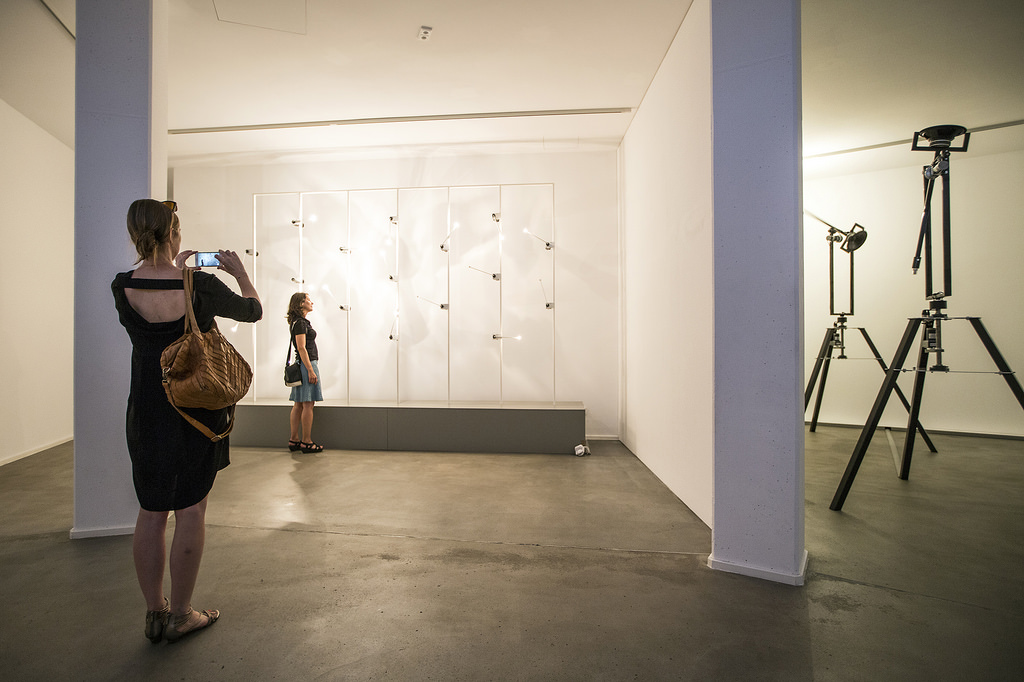
Opening | Oscillations by Joris Strijbos. Photo by Bresadola+Freese/drama-berlin.de for NOME Gallery
Oscillations by Joris Strijbos opens at NOME Project gallery in Berlin until 30 July 2016.

